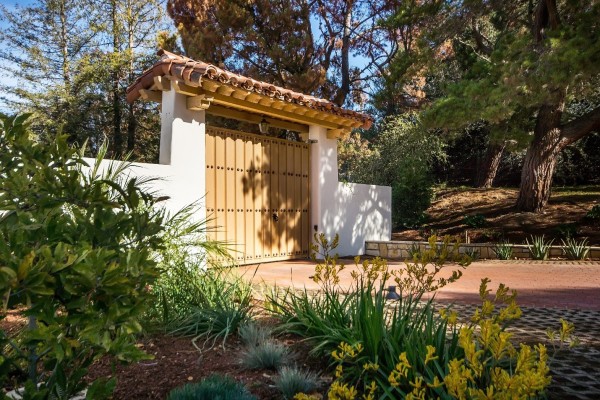These resources are from an archived version of our website. Want to see what we’ve been up to lately? Check out our new website.
How can I prevent erosion in my low-water landscaping?
One common landscaping concern for high performance homeowners is erosion—which can significantly affect your home, neighborhood, local natural habitats, and the water supply.
What is erosion?
Erosion is the natural process by which soil and rock are removed from one area and deposited into another—usually as a result of wind, rainfall, or water flow.
While this process has brought us natural phenomena like the Grand Canyon, it is also to blame for stripping the land bare of nutrient-dense soil, creating excessive sediment in waterways, disrupting ecosystems, and other environmental problems.
In the case of a sloped yard, erosion can ruin your landscape design by carving gullies and uprooting your plants. Soil erosion can happen slowly, gradually washing away top soil—or quickly in the event of heavy rainfall.

Luckily, there are several control strategies to prevent erosion, conserve water, and help keep your yard intact.
Intentional landscape design
The first line of defense against erosion is to design your landscape with erosion prevention in mind. Be intentional about the slope of your property, and ensure proper drainage is built into your yard. An automatic irrigation system will efficiently water your landscape, without the risk of over watering or causing unnecessary runoff.
Rain gardens
Another erosion prevention option is rain gardens. Rain gardens divert rainwater from roof downspouts, allowing it to soak slowly into the ground—irrigating plants instead of eroding soil. Water-loving plants, or those that can sustain periods of temporary flooding are the best choice for rain gardens.
Mulch
Mulches are typically composed of wood bark chips, wood grindings, pine straws, nut shells, and/or shredded landscape clippings—and aids in erosion prevention by protecting soil, increasing surface area and improving water penetration. Mulching flower beds and around shrubs and trees provides additional erosion control. You can also include fiber mulch mats in your landscape design to help hold moisture in the soil.
Avoid using rock mulches in sunny areas or around non-arid climate plants, as they radiate large amounts of heat and promote water loss. Also avoid using too much mulch, as excessive amounts can restrict water flow to plant roots.
Native plants
Maintaining a healthy vegetative cover helps hold soil firmly in place when water rushes across your yard. Plant your slope with native plants that require little water and can anchor the soil as their root systems become established. Use layered plantings of deep- and shallow-rooted trees, shrubs and ground covers to prevent water runoff.
Structures
Another effective (and attractive) erosion solution is to terrace the slope with boulders, stone retaining walls or landscape timbers to gradually flatten the incline and slow drainage. A terrace system can even help create more usable space in your yard by allowing for seating areas or vegetable gardens. Pressure-treated lumber and wood-sealed planks prevent rotting, which extends the life of these structures.
Interested in learning more about Clarum’s approach to high performance landscaping? Give us a call at 650.322.7069.








